 W
WThe little brown bat or little brown myotis is a species of mouse-eared microbat found in North America. It has a small body size and glossy brown fur. It is similar in appearance to several other mouse-eared bats, including the Indiana bat, northern long-eared bat, and Arizona myotis, to which it is closely related. Despite its name, the little brown bat is not closely related to the big brown bat, which belongs to a different genus.
 W
WThe black-rumped agouti is an agouti species from the family Dasyproctidae. It is endemic to Brazil, and its range roughly equals the Northeast Region. It is named after its black rump which contrast clearly with the orange body.
 W
WThe Burmese ferret-badger, also known as the large-toothed ferret-badger, is a mustelid native to Southeast Asia.
 W
WThe Chinese bamboo rat is a species of rodent in the family Spalacidae found in southern China, southern Myanmar, and northern Vietnam. Its habitat is bamboo thickets usually at high elevations, pine forests, and plantations.
 W
WThe Chinese ferret-badger, also known as the small-toothed ferret-badger is a member of the Mustelidae, and widely distributed in Southeast Asia. It is listed as Least Concern on the IUCN Red List and considered tolerant of modified habitat.
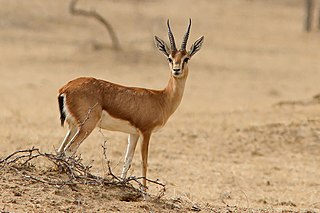 W
WThe chinkara, also known as the Indian gazelle, is a gazelle species native to Iran, Afghanistan, Pakistan and India.
 W
WThe dassie rat is an African rodent found among rocky outcroppings. It is the only living member of its genus, Petromus, and family, Petromuridae. The name "dassie" means "hyrax" in Afrikaans, and the two animals are found in similar habitats. Petromus means "rock mouse" and dassie rats are one of many rodents sometimes called rock rats. The family and genus names are sometimes misspelled as Petromyidae and Petromys.
 W
WThe giant golden-crowned flying fox, also known as the golden-capped fruit bat, is a species of megabat endemic to the Philippines. Since its description in 1831, three subspecies of the giant golden-crowned flying fox have been recognized, one of which is extinct. The extinct subspecies was formerly recognized as a full species, the Panay golden-crowned flying fox. Formerly, this species was placed in the genus Pteropus; while it is no longer within the genus, it has many physical similarities to Pteropus megabats. It is one of the largest bat species in the world, weighing up to 1.4 kg (3.1 lb)—only the Indian and great flying fox can weigh more. It has the longest documented forearm length of any bat species at 215 mm (8.5 in).
 W
WThe greater Asiatic yellow bat is a species of vesper bat.
 W
WThe Himalayan serow is native to the Himalayas. Since 2019, it is recognised as a subspecies of the mainland serow.
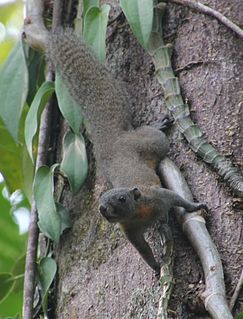 W
WThe horse-tailed squirrel is a species of rodent in the family Sciuridae. It is found throughout the islands of Borneo and Sumatra, as well as the southern half of the Malay Peninsula, which includes the entire nations of Brunei and Malaysia, as well as some areas of Indonesia and Thailand. There was a mention of this squirrel being found in Vietnam in 1831, but subsequent descriptions of this squirrel's range have not included that nation.
 W
WThe Indian wolf is a subspecies of grey wolf that ranges from Southwest Asia to the Indian Subcontinent. It is intermediate in size between the Himalayan wolf and the Arabian wolf, and lacks the former's luxuriant winter coat due to it living in warmer conditions. Within this subspecies, the "Indian plains wolf" is genetically basal to all other extant Canis lupus apart from the older-lineage Himalayan wolf, with both proposed as separate species. The Indian wolf travels in smaller packs and is less vocal than other variants of the grey wolf, and has a reputation for being cunning.
 W
WThe Jamaican fig-eating bat is a species of bat in the family Phyllostomidae. It is the only living species in the genus Ariteus. The scientific name translates as "yellowish and warlike". There are no recognised subspecies.
 W
WThe lesser mouse-tailed bat is a species of microbat in the family Rhinopomatidae. Also referred to as Hardwicke's lesser mouse-tailed bat and long-tailed bat, it is named after Major General Thomas Hardwicke (1755–1835), an English soldier and naturalist who served many years in India. It is found in North Africa, some parts of central and eastern Africa, West Asia and east to the Indian subcontinent.
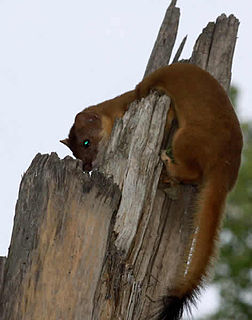 W
WThe long-tailed weasel, also known as the bridled weasel or big stoat, is a species of mustelid distributed from southern Canada throughout all the United States and Mexico, southward through all of Central America and into northern South America. It is distinct from the short-tailed weasel, also known as a "stoat", a close relation that originated in Eurasia and crossed into North America some half million years ago.
 W
WThe rusty-spotted cat is one of the cat family's smallest members, of which historical records are known only from India and Sri Lanka. In 2012, it was also recorded in the western Terai of Nepal. Since 2016, the global wild population is listed as Near Threatened on the IUCN Red List as it is fragmented and affected by loss and destruction of prime habitat, deciduous forests.
 W
WThe silver-haired bat is a solitary migratory species of vesper bat in the family Vespertilionidae and the only member of the genus Lasionycteris.
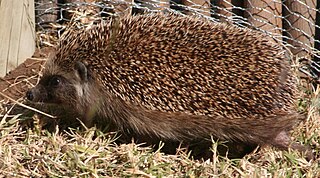 W
WThe Southern African hedgehog is a species of mammal in the family Erinaceidae. It is found in Angola, Botswana, Lesotho, Namibia, South Africa, Tanzania and Zimbabwe.
 W
WSpix's yellow-toothed cavy is a rodent, a cavy species from South America. It is found in Bolivia east of the Andes and much of south central to northeastern Brazil. The species is found in open savanna and semiarid habitats, such as the Cerrado and Caatinga of Brazil. Its karyotype is 2n = 64 and FN = 118.
 W
WThe stump-tailed macaque, also called the bear macaque, is a species of macaque found in South Asia. In India, it is found in south of the Brahmaputra River, in the northeastern part of the country. Its range in India extends from Assam and Meghalaya to eastern Arunachal Pradesh, Nagaland, Manipur, Mizoram and Tripura.
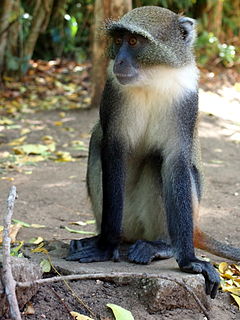 W
WSykes' monkey, also known as the white-throated monkey or Samango monkey, is an Old World monkey found between Ethiopia and South Africa, including south and east Democratic Republic of Congo. It is named after English naturalist Colonel William Henry Sykes (1790-1872), and has been considered conspecific with the blue monkey, but has a large white patch on the throat and upper chest, and a grizzled cap.
 W
WThe western rock elephant shrew or western rock sengi is a species of elephant shrew in the family Macroscelididae. It is found in Namibia, South Africa, possibly Angola, and possibly Botswana. Its natural habitats are subtropical or tropical dry shrubland and rocky areas.